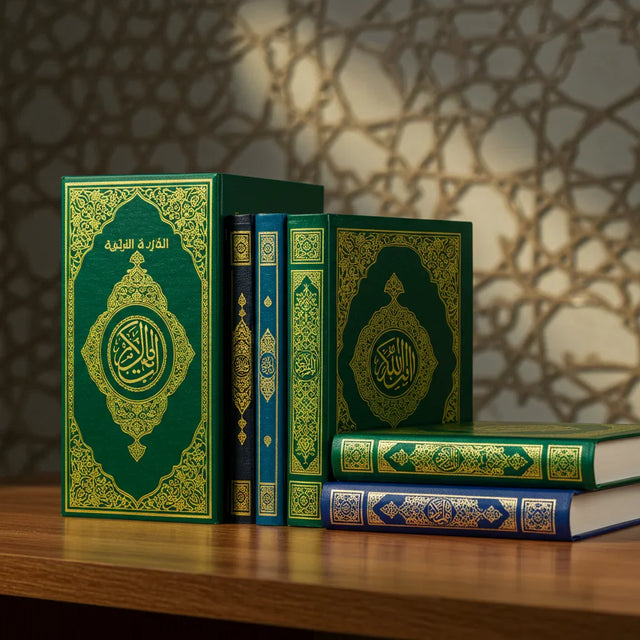
Quran
-
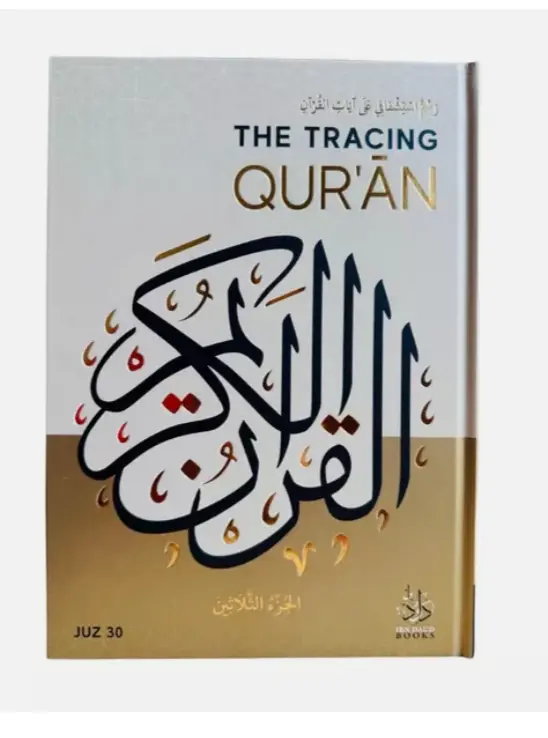
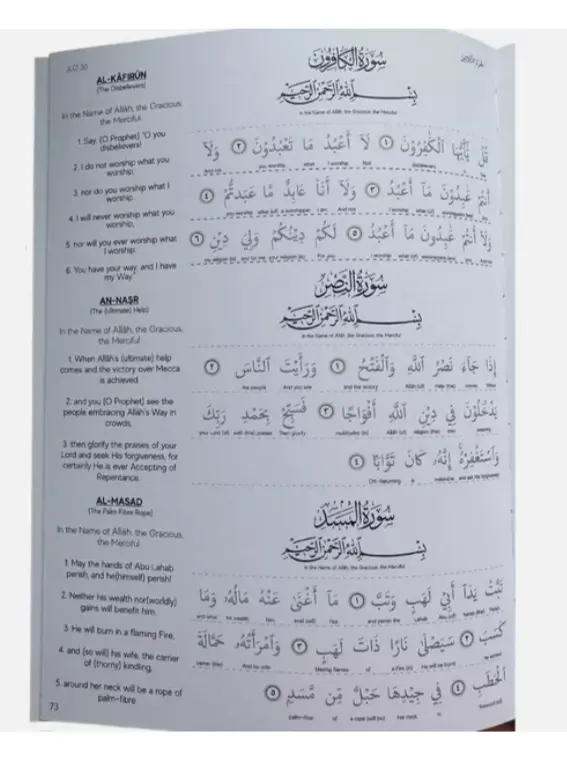
The Tracing Quran (Juz 30)- Hardback
In this Series, pretty much anybody with the Enthusiasm to pick up a pen will be able to unearth the inner workings of the Quran and its deeper treasures. Through tracing the verses, they will gain the tools to appreciate the Our'an andits teachings in a lasting personal wave. This is a stimulating journey, and its starting point. ests on using the pen, the very instrument that Allah Imighty SWT places centrally in His first Revelation to the Prophet Muhammad PBUH Read Your Lord is most Generous He who taught b *Read: Your Lord is most Generous, He who taught by the pen (Taught man that which he knew not " [Surah Al-Alaq 96.3-51 In using "The Tracing Quran' methodology, we can give the pen its rightful position as a medium of peace and quidance "The Tracing Our'an includes: A reminder of the importance of engaging with the Ouran • The virtues of engaging with the Quran by way of tracing and writing. An approach to tracing or writing the Quran. A tracing, writing & memorisation checklist A comprehensive translation alongside a word-for-word translation so that the enthusiast can gain an understanding of the Our an as they trace rgcticeaheetsand cneckists to nelp the gsEr track their orogress and make solid preparations towards creating their own beautiful cony ofJuz 30
£13.99
-


Holy Quran Transliteration in Roman Script with Colour Coded Tajweed Rules- Kaba Cover
A beautiful elegant Holy Qur'an design inspired by the Kiswa of the Holy Kaaba. The Qur'an is colour coded for Tajweed Rules including Transliteration of Roman Scripts with Arabic Text and English Translation inside with a beautiful mesmerising hardback cover with a beautiful Kabah Cover, It has symbols denoting pauses in Quranic Arabic Text. Seven beautiful rainbow colours cover the whole Quran's 13 Lines Quran. This is easy for anyone who would like to read transliteration in English with easy-to-understand Translation perfect as an ideal gift for anyone or for beginners trying to understand the meaning of the Qur'an The Holy Qur'an with Colour coded is also known Kaba Cover Qur'an including Roman Scripts with Arabic Text and English Translation Transliteration in roman Script by M. Abdul Haleem Eliyasee
£27.00 £23.99
-
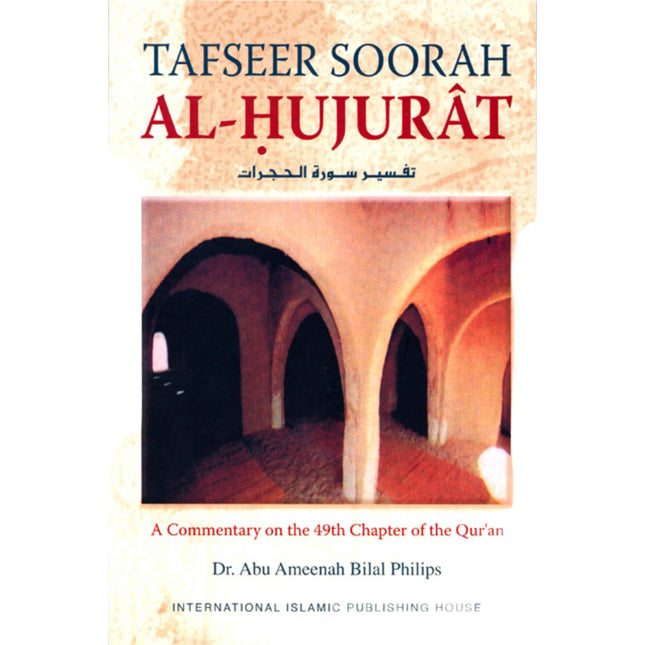
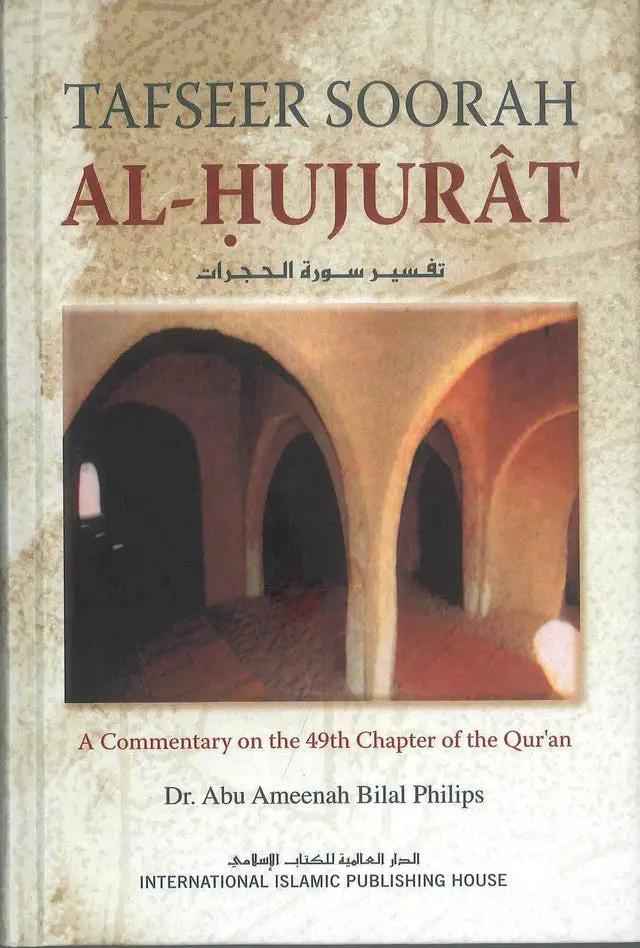
Tafseer Soorah Al-Hujurat by Dr. Bilal Philips
A Commentary on the 49th chapter of the Quran Bilal Philips " Tafseer soorah hujurat is worth reading for any serious and sincere reader of the Quran , the Meaning and history of the science of tafseer contained in the book ,s introduction add to its readability , As bilal explain in the foreword.
£12.49
-
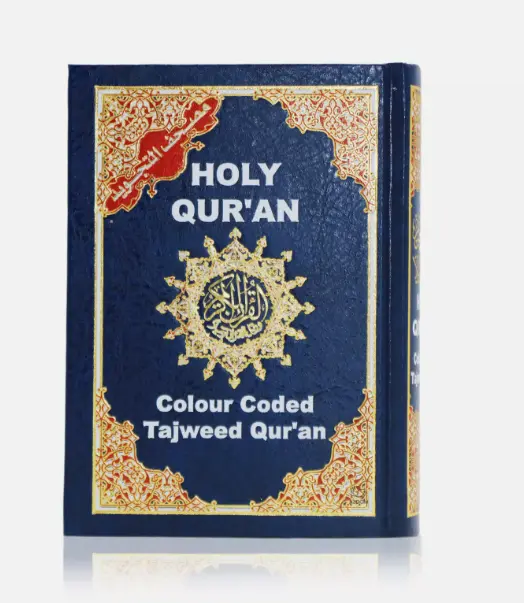
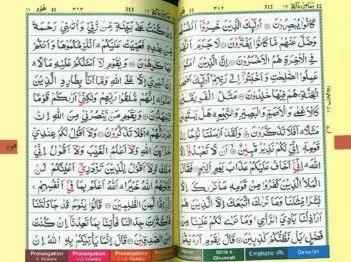
Tajweed Quran Colour Coded, Indo-Pak-Persian script (13x17cm)
This complete Colour Coded Tajweed Quran comes with a nice and beautiful hard cover. This Tajweed Quran is in the Oriental Indian Calligraphy. The size of this Tajweed Quran makes it easy to handle or to keep in a small pocket. This Tajweed Quran is in Hafs narration. All our Tajweed Quran products including this Quran, come with the following: Colour coded letters: to present the Tajweed rules, very good and simple way to learn and apply Tajweed rules . Obvious script: extra spaces were added between the words in order to make it easier to read and recite the Quran. Permissible stops: long spaces were added at certain places where it is permissible to stop. It helps to avoid stopping at wrong places or times. A set of very useful indexes such as: Surahs Colour Index, Subject Index. Tajweed rules explained in details with helpful illustration.
£14.99
-


Noble Quran Small H/C
Interpretation of the meanings of the Noble Qur'an with Arabic text in the modern English language. A summarized version of At-Tabari, Al-Qurtubi and Ibn Kathir with comments from Sahih Al-Bukhari. This 1 volume summarized version offers brief commentary and Ahadith wherever necessary. This unique combination of commentary and relevant Ahadith makes this a very useful study reference tool.
£21.49
-
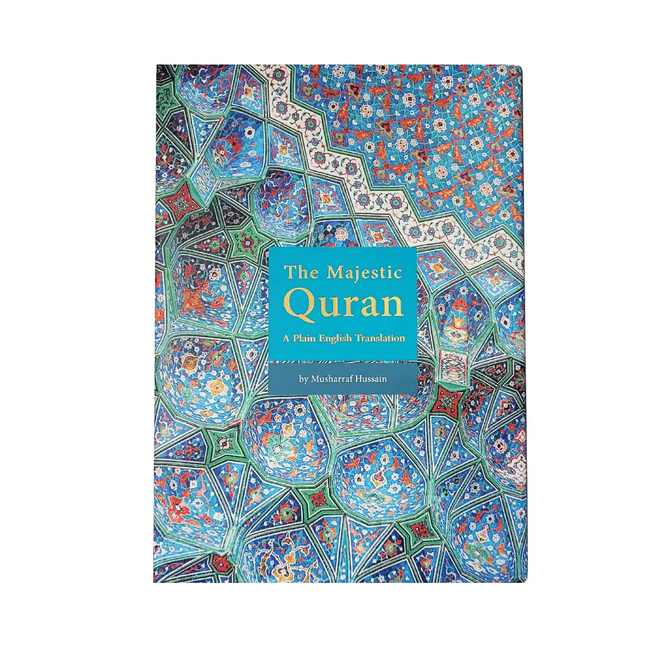
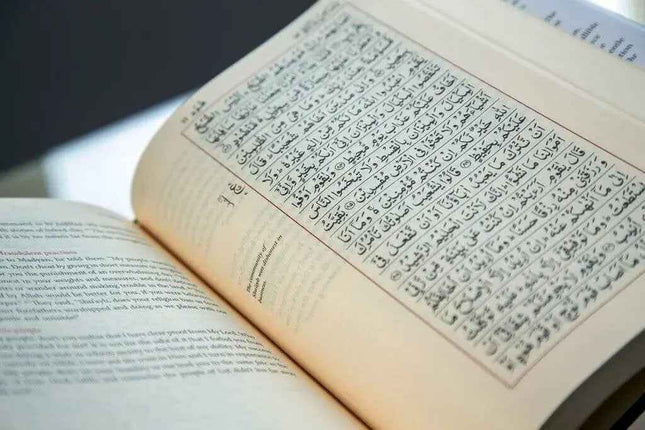
The Majestic Quran (Indo-Pak Script) Large- Hardback
Key features include: Easy to understand and in today’s simple English Made for the modern-day and contextualised into contemporary themes Beautifully designed and presented for an optimum reading experience Contains both Arabic verses and English translation side by side
£24.99
-
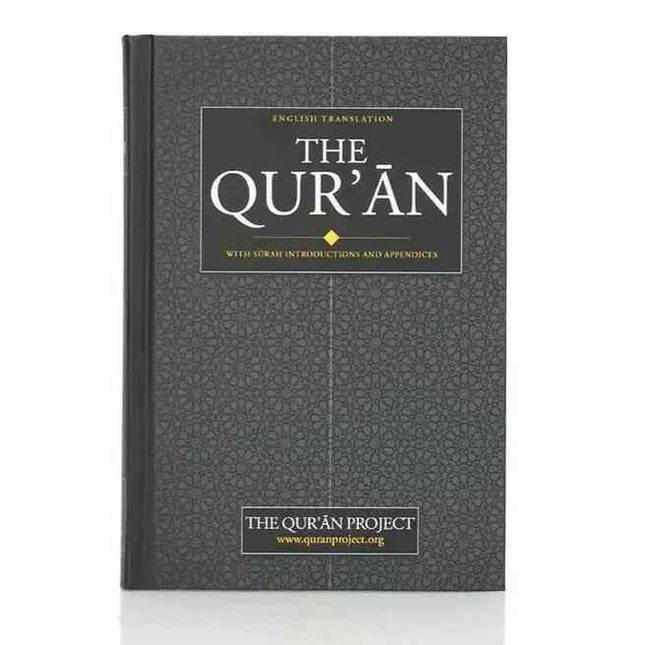
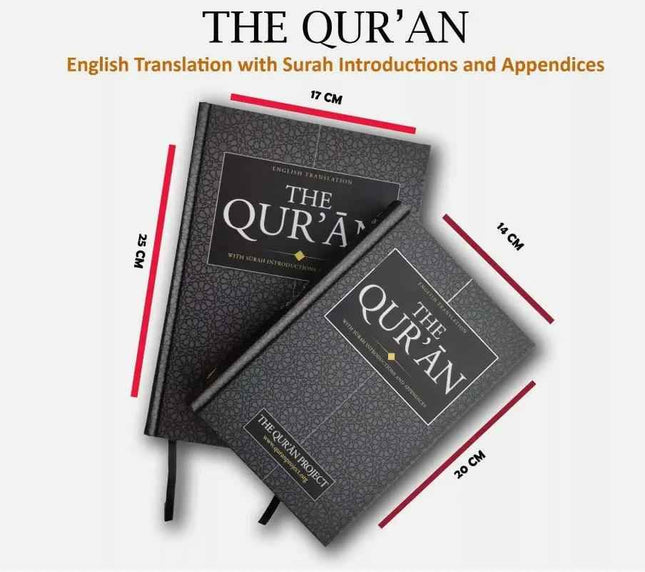
English Translation of the Quran: The Quran Project
The Qur’an is the word of Allah (SWT), it has been sent down to guide humanity for all times to come. No book can be like it. As you come to the Qur’an, Allah speaks to you. To read the Qur’an is to hear Him, converse with Him and to walk in His ways. It is the encounter of life with the Life-giver. Three main objectives have served as guidelines: To present correct meanings, as far as possible, in accordance with ‘aqeedah ahl as-Sunnah wal-Jama’ah. To simplify and clarify the language for the benefit of all readers. To let the Qur’an speak for itself, adding footnotes only where deemed necessary for explanation of points not readily understood or when more than one meaning is acceptable. This acclaimed translation of the meanings of the Holy Qur’an has set new standards of readability and accuracy, for the benefit of everyone needing a resource of the Qur’an in English. It is now available in hardback form for ease in carrying and distribution. Readers will appreciate the clear, modern English, the smooth flow of sentences, and the concise footnotes which give necessary information but allow uninterrupted reading of the main text. APPENDICES Short Biography of the Prophet Muhammad, Introduction to the Study of the Qur’an, The Unique Qur’anic Generation, Preservation and Literary Challenge of the Qur’an, Scientific Miracles of the Qur’an, The Qur’an on the Origin of the Universe, The Qur’an on the ‘Big Bang Theory’, The Qur’an on the Expanding Universe, The Qur’an on the Orbital Movement of the Sun and the Moon, The Qur’an on Duality in Creation, The Qur’an on the Origin of Life in Water, The Qur’an on Seas and Rivers, Miracle of Iron, The Qur’an on Mountains, The Qur’an on Human Embryonic Development, Scientists Acceptance of the Miracles of the Qur’an, Miracles Performed, Old and New Testament Prophecies of Muhammad, Women in Islam, How do I become a Muslim?, Quick Guide to Ablution and Prayer and Frequently Asked Questions about Islam – Short Answers
£9.99 - £19.99
-


MUQADDIMAH JAZARIYYAH – المقدمة الجزرية
Muqaddimah Jazariyyah – المقدمة الجزرية Al-Muqaddimah al-Jazariyyah – is a New translation with Commentary of one of the famous poems of Imam ibn al-Jazari on the science of tajwid accompanied with tafsir [brief explanation]. Arabic poems are written on rhythmic patterns, known as Buhur, which is the plural of Bahr. The science that studies the rhythmic patterns of poems is called ‘Ilm ul-‘Arudh. Although these rhythmic patterns were used in pre-Islamic poetry, as a science it was developed by famous grammarian of the Arabic language, Imam Al-Khaleed bin Ahmad al-Faraheedi. Muqaddimah al-Jazariyah is a brief commentray on the poem of Imam ibn al-Jazari, rahimahullah, in the science of Tajweed. Also included with this book is an A3 Wall Poster explaining Sifaat ul-Huruf with Permanent Sifaat with their Opposites and Permanent Sifaat that don’t have Opposites. About Imam al-Jazari : He is Sham al-Din Muhammad ibn Muhammad ibn al-Jazari, rahmatullahi ta’ala ‘alayhi. He was a scholar born on the 25th of Ramadhan in Damascus in 751AH who went on to become a master in Qir’at, Tajweed, Hadith, History and Islamic Jurisprudence (Fiqh). Some have noted over 90 different works in the different sciences from the Imam, yet his most famous work is the poem translated herein. He was also known as al-Shaykh al-Qurra.
£7.99
-


Tajweed Rules of the Quran Part-3 أحكام تجويد القران
This is the third and final part of a three part series in English on the rules of tajweed the Qur'an for the recitation of Hafs from 'Aasim by the way of Ash-Shaatibiyyah. These books are meant as a guide for non-Arabs with a good grasp of English for studying tajweed of the Glorious Qur'an. This final book explains the stop and start when reading the Glorious Qur'an, and gives details as to what kind of stop is allowed, what kind is preferred, and what kind of stop is forbidden. Stopping on the ends of words with strong endings (consonants) and rules for what is allowed on the last letter of the word is described, including ar-room (الروم) and al-ishmaam (الإشمام). Stopping on the ends of words with weak endings (words ending in the alif, ya' or wow) and different rules and explanations for these type of words is clarified. One important aspect of Qur'an recitation is knowing and understanding which word combinations are written together and which separately in different parts of the Qur'an as well as in which places of the Qur'an are some words are written the female haa (هاء), and in which places they are written with the taa (تاء). This part lays out the different places in the Qur’an these occurrences take place, so the reader knows how he/she can stop on these words. The words that are read in a special way, or have two allowed ways for the reading of Hafs from 'Aasim by the way of Ash-Shaatibiyyah are detailed in this book. The history of the writing of the Glorious Qur'an (رسم) and the general rules for the writing of the Qur'an are laid out in the last chapter of this part. This last part of the three parts on tajweed is for students who have studied and mastered the other two parts, or have studied everything covered in the first two parts. The explanations of the different subjects are in English, and the Arabic terms are translated. The goal is always to assist the students in understanding and to encourage them to learn the Arabic terms and definitions. The three parts of this series on tajweed rules of the Glorious Qur'an should facilitate non-Arabic speaking students of the Qur’an whether they are in a classroom with an Arabic medium for teaching or English. With this third part completed, insha' Allah the non-Arab English speaking student of the Qur'an will find a complete curriculum and explanation of the tajweed rules for the recitation of Hafs 'an 'Aasim from the way of Ash-Shatibiyyah in any classroom or study situation that he/she may find themselves in. These three parts are only guidance; the real goal is reciting and applying all the different rules correction which can only be done by reciting to and being corrected by a qualified teacher of the Qur’an.
£8.50
-


Tajweed Rules of the Quran part Two- أحكام تجويد القران
This is the second part of what shall be, insha' Allah, a three part series on the rules of tajweed of the Qur'an, for the recitation of Hafs from 'Aasim by the way of Ash-Shaatibiyyah. The book is intended to be a guide for non-Arabs with a good grasp in English in studying tajweed. This book explains the concept of the accent (an-nabr) in the recitation of the Glorious Qur'an and the conditions of its use, it also defines and explains the important chapter on the characteristics of the letters, velarization and attenuation (tafkheem and tarqeeq) are covered in this part, as well as the concept of the two alike, the two similar, the two close, and the two far and the rules for idghaam and ith-haar in these different relationships. A brief introductory to grammar terms is made in this book to assist the student in understanding the last chapter, that of the connecting hamzah (hamzah al-wasl). The explanations of the different subjects are in English, and the Arabic terms are translated. This is to assist the student in understanding and encourage them to learn the Arabic definitions and terms. This book should facilitate non-Arabs studying tajweed whether they are in a classroom with explanations taught in Arabic or in English. This book cannot replace the importance of reciting to and being corrected by a trained teacher of tajweed, instead it is a guide and an aid in understanding the concepts of tajweed, the application can only be refined by recitation and correction
£7.50
-


Tajweed Rules of the Quran Part 1- أحكام تجويد القران
This book explains the articulation points of the Arabic letters, the rules of noon saakinah, meem saakinah, and lam saakinah. It explains all of the different lengthenings(mudood) and how voweled/non-voweled letters are formed. The qalqalah mechanism is explained in the last chapter. Terms are introduced in Arabic and then translated into English. Explanations are done in English but with integration of the Arabic terms as they are learned.
£7.50
-

Tajweed Rules of the Quran (3 Parts Set)- أحكام تجويد القران
This is a complete set of 3 books. Book 1 – This is a guide for studying tajweed. The student who uses this bookis expected to have a basic grasp of Arabic before starting thiscourse. The student should know all the Arabic letters and vowels andbe able to read at an elementary level. This book is either for anEnglish speaking student studying the Qura’an in an Arabicenvironment, but needing explanation of the Arabic terms in English,or a student studying the explanations of tajweed in English, butlearning the basic concepts in Arabic so they may integrate into theArabic terms and definitions throughout the book, since the science oftajweed is an Arabic science. This book explains the articulation points of the Arabic letters, therules of noon saakinah, meem saakinah, and lam saakinah. It explainsall of the different lengthenings (mudood), and how voweled, andnon-voweled letters are formed. The qalaqah mechanism is explained inthe last chapter. Terms are introduced in Arabic, and the translatedinto English. Explanations are done in English, but with integrationof Arabic terms, as they are learned. A student of the Qur’an cannot except to learn tajweed simply bystudying this book. The learning of proper Qur’anic recitation canonly be done by listening to a qualified Qur’an teacher recite, thenreciting to them and receiving corrections from the teacher. Book 2 – By Allah’s grace, this is the second part of what shall be, insha’Allah, a three part series on the rules of tajweed of the Qur’an, forthe recitation of Hafs from ‘Aasim by the way of Ash-Shaaibiyyah. Thebook is intended to be a guide for non-Arabs with a good grasp inEnglish in studying tajweed. This book explains the concept of the accent(an-nabr) in therecitation of the Glorious Qur’an and the conditions of its use, italso defines and explains the important chapter on the characteristicsof the letters, velarization and attenuation (tafkheem and tarqeeq)are covered in the part, as well as the concept of the two alike, thetwo similar, the two close, and the two far and the rules for idghaamterms is made in this book to assist the student in understanding thelast chapter, that of the connecting hamzah(hamzah al-wasl). The explanations of the different subjects are in English and theArabic terms are translated. This is to assist the student inunderstanding and encourage them to learn the Arabic definitions andterms. This book should facilitate non-Arabs studying tajweed whetherthey are in a classroom with explanations taught in Arabic or inEnglish. This book cannot replace the importance of reciting to and beingcorrected by a trained teacher of tajweed, instead it is a guide andan aid in understanding the concepts of tajweed, the application canonly be refined by recitation and correction. Book 3 – Al-hamdu lillah, this is the third and final part of a three part series in English on the rules of tajweed of the Qur’an for the recitation of Hafs from ‘Aasim by the way of Ash-Shaatibiyyah. These books are meant as a guide for non-Arabs with a good grasp of English for studying tajweed of the Glorious Qur’an. This final book explains the stop and start when reading the Glorious Qur’an, and gives details as to what kind of stop is allowed, what kind preferred, and what kind of stop is forbidden. Stopping on the ends of words with strong endings (consonants)and rules for what is allowed on the last letter of the word is described, including and Stopping on the ends of words with weak endings (words ending in the alif, ya’ or wow) and different rules and explanations for these type of words is clarified. One important aspect of Qur’an recitation is knowing and understanding which word combinations are written together and which separately in different parts of the Qur’an as well as in which places of the Qur’an are some words are written with the female and in which places they are written with the This part lays out the different places in the Qu’ran these occurrences take place, so the reader knows how he/she can stop on these words. The words that are read in a special way, or have two allowed ways for the reading of Hafs from ‘Aasim by the way of Ash-Shaatibiyyah are detailed in this book. The history of the writing of the Glorious Qur’an (– ) and the general rules for the writing of the Qur’an are laid out in the last chapter of this part. This last part of the three parts on tajweed is for students who have studied and mastered the other two parts, or have studied everything covered in the first two parts. The explanations of the different subjects are in English, and the Arabic terms are translated. The goal is always to assist the student in understanding and to encourage them to learn the Arabic terms and definitions. The three parts of this series on tajweed rules of the Glorious Qur’an should facilitate non-Arabic speaking students of the Qur’an whether they are in a classroom with an Arabic medium for teaching or English. With this third part completed, insha’ Allah the non-Arab English speaking student of the Qur’an will find a complete curriculum and explanation of the tajweed rules for the recitation of Hafs ‘an ‘Aasim from the way of Ash-Shatibiyyah in any classroom or study situation that he/she may find themselves in. These three parts are only guidance; the real goal is reciting and applying all the different rules correction which can only be done by reciting to and being corrected by a qualified teacher of the Qur’an
£25.00 £21.99





























